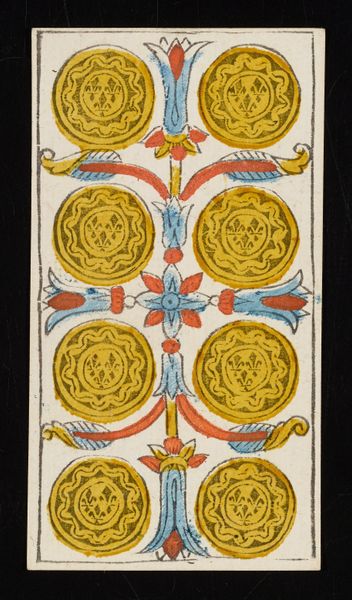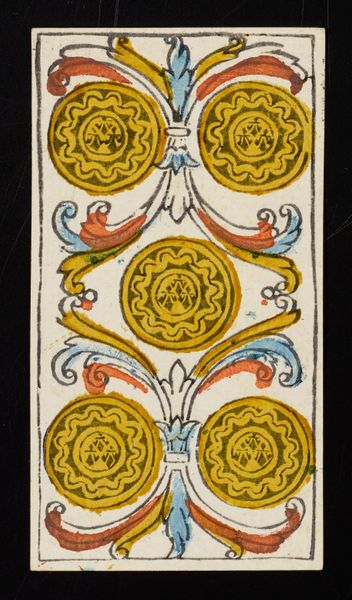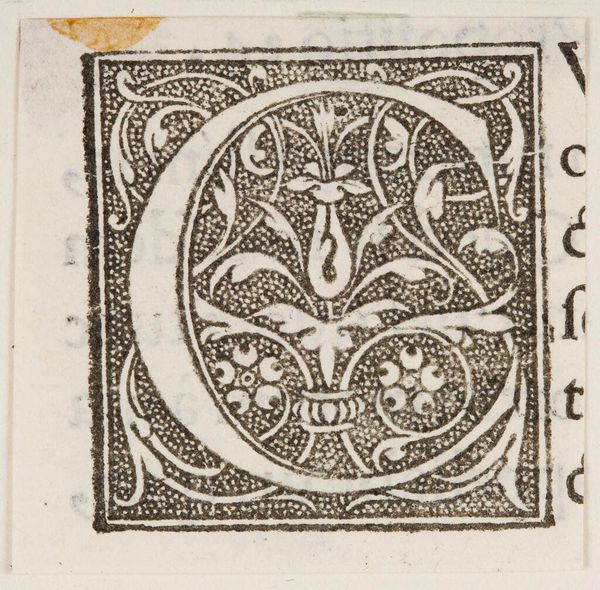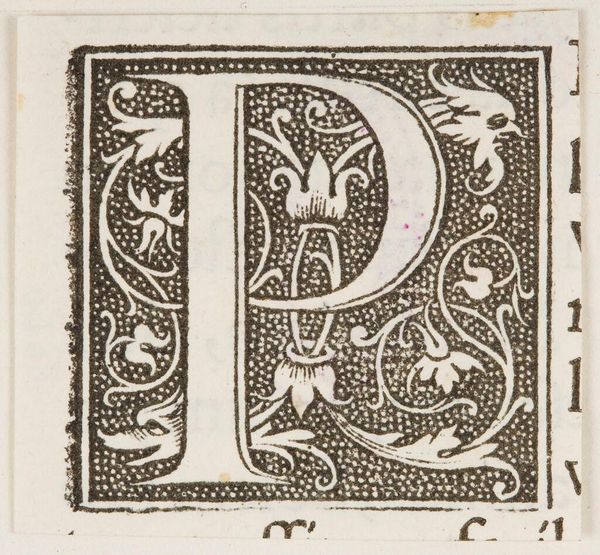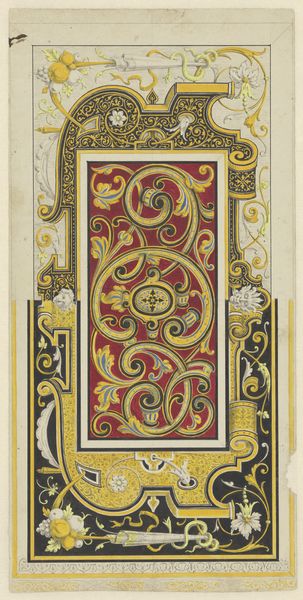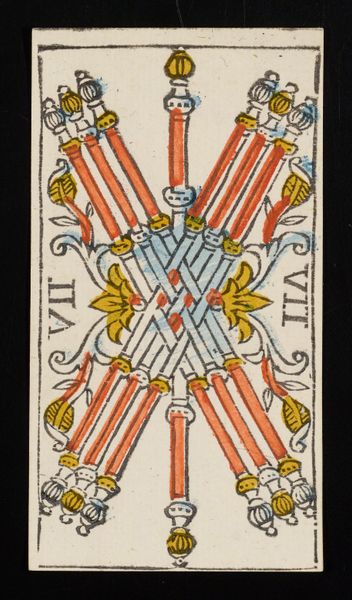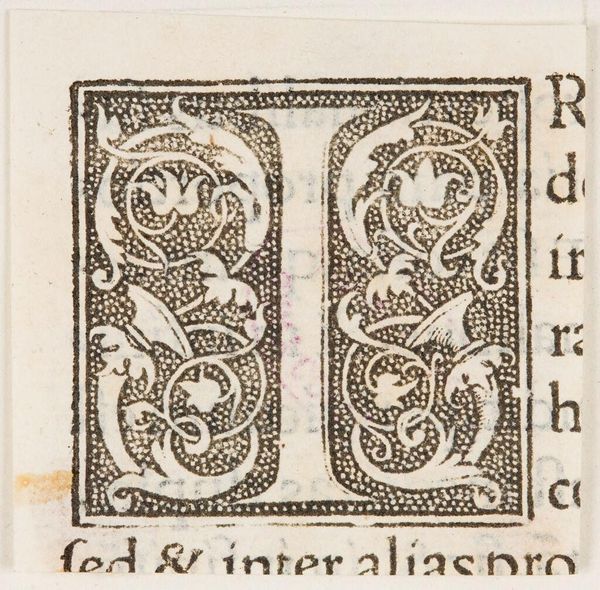
graphic-art, print, paper, ink, engraving
#
graphic-art
# print
#
paper
#
ink
#
engraving
Dimensions: 4 7/16 x 2 7/16 in. (11.27 x 6.19 cm) (image, sheet)4 5/8 x 2 1/2 in. (11.75 x 6.35 cm) (sheet, each)
Copyright: Public Domain
Curator: This intriguing piece is "Two of Coins" by Claude Burdel, created in 1751. It's an engraving printed with ink on paper, currently residing here at the Minneapolis Institute of Art. Editor: It’s immediately striking, a playing card oozing old-world charm! There’s something so handmade and precious about it, even the colors feel muted, as if worn with time and use. What strikes you about the physical production of this? Curator: Well, considering the period, its creation opens a fascinating window into 18th-century card production. Engraving was a skilled and laborious craft, positioning the artisans within very specific social and economic structures. Editor: Precisely. The use of engraving – look at the precision in those lines! It tells a story of the material constraints, the painstaking effort. Notice how the coloring seems almost applied after the engraving? I’m drawn to the labour, and its historical value Curator: The social context is undeniable. The very act of playing cards was interwoven with class and gender dynamics. This was part of the Enlightenment and the printing revolution in France, how does that social background speak to you? Editor: It suggests restricted access and economic production, while playing itself might serve as a symbol for human vice and excess during pre-Revolution France. Think about it: card games mirror political gambles of wealth and social positioning, they speak to the opulence and inequalities of the Ancien Régime! It offers a tactile glimpse into past worlds. Curator: That is very pertinent given the looming shadow of the revolution. This piece, while seemingly innocuous, subtly underscores how materials and practices reflected societal issues and hierarchies in plain sight. Editor: Thinking about craft and societal critique has deepened my understanding of "Two of Coins", recognizing labour value as much as visual and contextual worth, it feels all that much more present. Curator: Exactly. For me, the piece challenges the very systems in place through a history of play. "Two of Coins" is anything but a passive historical artifact; instead, a reflection of identity and power during a time of intense social upheaval.
Comments
No comments
Be the first to comment and join the conversation on the ultimate creative platform.
